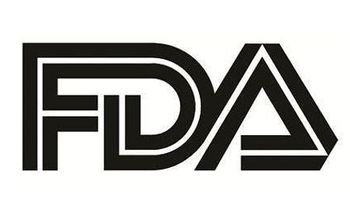
New Blood Pressure Measurement Technologies: What Role in Your Practice?
Current evidence suggests that out-of-office blood pressure measurements and 24-hour ambulatory blood pressure monitoring are better predictors of cardiovascular risk than routine office measurements. Is it time to make greater use of automated devices in my practice?
Q: Current evidence suggests that out-of-office blood pressure measurements and 24-hour ambulatory blood pressure monitoring are better predictors of cardiovascular risk than routine office measurements. Is it time to make greater use of automated devices in my practice?
A: A growing number of clinical outcome studies have shown that home and 24-hour ambulatory blood pressure measurements are better predictors of future cardiovascular events than blood pressures recorded by a physician or nurse in an outpatient setting using a mercury or aneroid device. Nonetheless, even though the latest American Heart Association recommendations have noted a role for home or 24-hour ambulatory blood pressure monitoring, measurement of blood pressure in the office by a clinician using a mercury, or more commonly, an aneroid device, continues to be the standard of care.
I believe that the time has come to take advantage of the availability of automated devices, particularly in the diagnosis and staging of hypertension.
Single-measurement oscillometric devices. These devices, which are relatively inexpensive, make it possible for most patients to monitor and record blood pressures at home. The documentation of normal out-of-office blood pressures has been valuable in identifying office, or white coat, hypertension, which may be observed in 25% or more of patients in whom hypertension is initially diagnosed in the office setting. These devices have also been useful in revealing occasional occurrences of masked hypertension or persistent elevation of blood pressure at home (even though pressures recorded in the office are normal). This widely available technology has been underutilized in the practice setting both in the diagnosis of hypertension and as a valuable tool for assessing response to antihypertensive medications.
Is there a role for oscillometric devices in your office? The use of a single-measurement oscillometric device, many models of which are available, provides little information beyond that obtained with an auscultatory BP measurement. The reason, of course, is that in both cases the nurse or physician is present at the time of the measurement, subjecting both technologies to the white coat effect. In our experience, simultaneous measurements with a mercury manometer (by a nurse) and an automated device have not been statistically different.
BpTRU automated blood pressure monitors. A major advance in office blood pressure measurement has been the development of a device called the BpTRU. This desktop monitor enables the clinician to program up to 6 blood pressure measurements, to be taken successively at intervals of from 1 to 5 minutes.1,2 Our own validation studies that compared an initial BpTRU reading with a measurement obtained by a research nurse using a mercury manometer have shown that initial BpTRU readings correlate very closely with mercury manometer readings.
After the initial reading, all subsequent BpTRU readings can be obtained without the nurse or physician present. Because of this, BpTRU devices make it possible to reduce the white coat effect so often seen in clinical practice. In our experience, subsequent readings are typically lower than the initial one, and stabilization usually occurs by the third or fourth reading. Several published reports have now provided very similar data regarding the accuracy and utility of this device.2,3 Unfortunately, a major deterrent to use of the BpTRU has been its cost (currently, about $800). In addition, availability has been limited.
With the development of new programmable oscillometric blood pressure devices, there will, I hope, be some reduction in cost, facilitating much wider use in the office setting. Until then, the auscultatory measurement of blood pressure and/ or single measurement oscillometric devices will remain the standard of care in the office setting, supplemented by increasing use of home blood pressure measurements and selected use of 24-hour ambulatory blood pressure monitoring.
Ambulatory blood pressure monitoring. This can provide valuable additional information for evaluating or monitoring patients with complicated hypertension. Ambulatory blood pressure monitoring can help determine whether a medication regimen fully controls blood pressure for 24 hours; this information may facilitate effective adjustments in medication dosages. It also provides an opportunity to assess blood pressure during sleep, to check for the "nocturnal dipper effect" that is often diminished or absent in patients with severe or complicated hypertension. Mounting evidence suggests that the absence of the nocturnal dipper effect predicts higher risk in patients with poorly controlled hypertension. Ambulatory blood pressure monitoring can also assist in the long-term assessment of the effects of hypertension and in the evaluation of patients with paroxysmal hypertension or postural hypotension.
Twenty-four-hour ambulatory blood pressure monitoring has been underutilized in clinical practice, largely because of its cost, which is not routinely covered by insurance. It is not likely that we will see widespread reimbursement for ambulatory blood pressure monitoring in the routine office evaluation of hypertension any time soon. However, more insurance carriers are now reimbursing for this procedure in patients with refractory hypertension, and Medicare now provides modest reimbursement, within strict guidelines, for its use in the diagnosis of white coat hypertension.
Making best use of existing technologies. How can current technologies be best utilized in the evaluation and diagnosis of hypertension? First, I would encourage clinicians to review with their staff the American Heart Association's general guidelines for accurate blood pressure measurement.4 My experience, from visiting many office practices, is that very few adhere to these simple recommendations.
If an initial auscultatory measurement of blood pressure is normal, consider that patient to be normotensive. However, if the history suggests the possibility of masked hypertension, confirm this with blood pressures obtained at home by the patient using one of the many available oscillometric devices--or you might confirm it with 24-hour ambulatory blood pressure monitoring. Elevated average blood pressures outside the office together with normal office blood pressures confirm the diagnosis of masked hypertension.
If the initial auscultatory blood pressure readings in the office are high, follow up with home blood pressure monitoring, usually over a period of at least 2 weeks. Normal out-of-office blood pressures together with high office readings suggest white coat hypertension. This, too, might be confirmed with 24-hour ambulatory blood pressure monitoring.
The BpTRU device can also be used to confirm white coat hypertension. In a new patient with an elevated auscultatory reading, obtain 6 programmed readings with the BpTRU. If blood pressures drop to normal after the clinician leaves the room, you may decide not to follow up with out-of-office readings and might instead monitor that patient with regular BpTRU measurements in the office. Clearly, the future availability of affordable programmable oscillometric devices will have a significant impact on the office management of hypertension.
References:
REFERENCES:
1.
Culleton BF, McKay DW, Campbell NR. Performance of the automated BpTRU measurement device in the assessment of white-coat hypertension and white-coat effect.
Blood Press Monit.
2006;11:37-42.
2.
Myers MG, Valdivieso MA. Use of an automated blood pressure recording device, the BpTRU, to reduce the "white coat effect" in routine practice.
Am J Hypertens.
2003;16:494-497.
3.
Mattu GS, Heran BS, Wright JM. Overall accuracy of the BpTRU-an automated electronic blood pressure device.
Blood Press Monit
. 2004;9:47-52.
4.
Pickering TG, Hall JE, Appel LJ, et al. Recommendations for blood pressure measurements in humans and experimental animals: Part 1: blood pressure measurement in humans: a statement for professionals from the subcommittee of Professional and Public Education of the American Heart Association Council on High Blood Pressure Research.
Hypertension.
2005;45:142-161.
Newsletter
Enhance your clinical practice with the Patient Care newsletter, offering the latest evidence-based guidelines, diagnostic insights, and treatment strategies for primary care physicians.









































































































































































































































































































